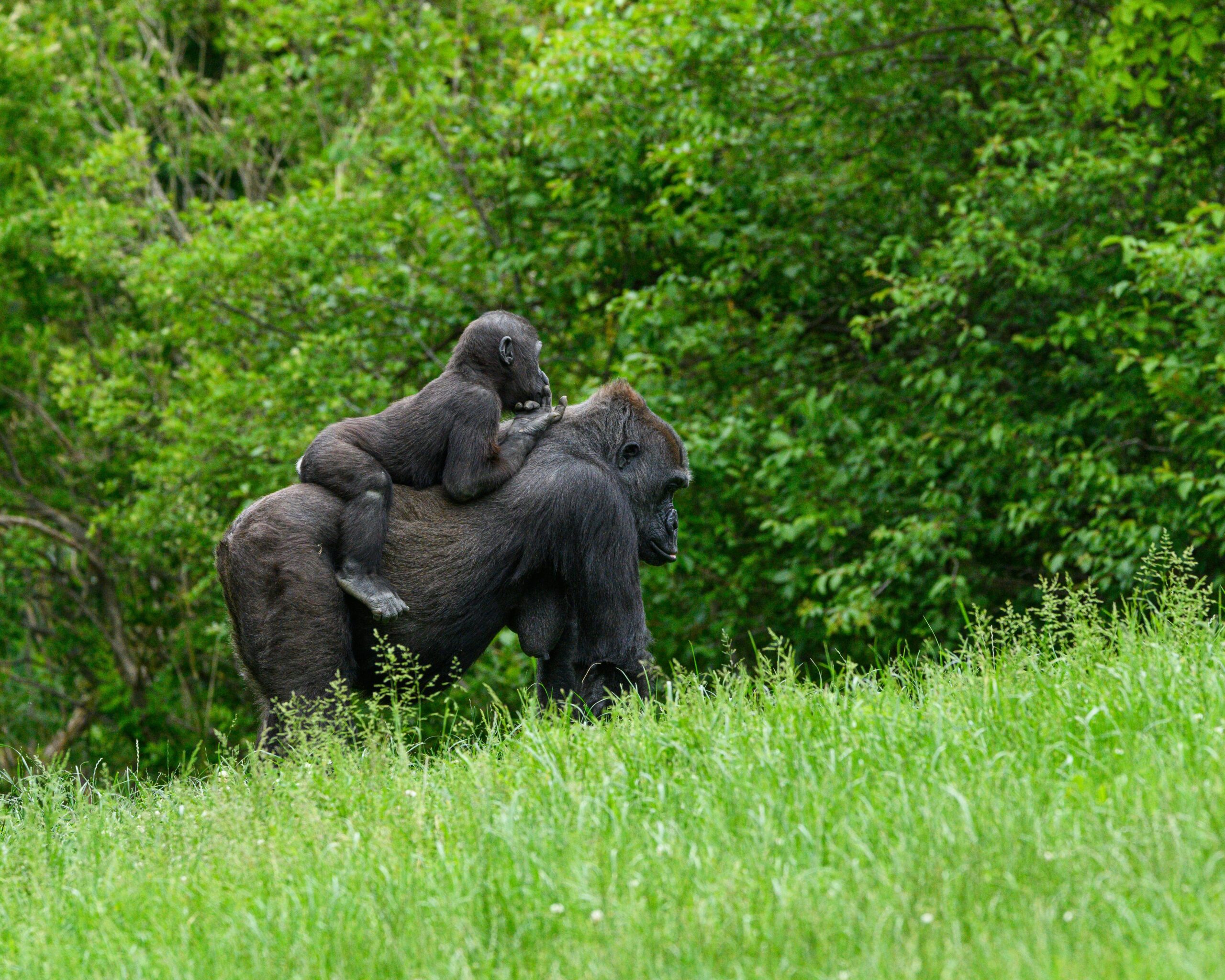What Is a Giant Ape?
A giant ape typically refers to any species of ape that is significantly larger than the great apes we know today, such as gorillas, chimpanzees, and orangutans. While modern apes are already impressive in size and strength, giant apes were far more massive and powerful. The most famous real-life giant ape was Gigantopithecus, which lived thousands of years ago. At the same time, pop culture has given us iconic fictional giant apes like King Kong, turning the term into a symbol of raw strength and primal majesty.
The Real Giant Ape: Gigantopithecus
One of the largest known apes to have ever lived is Gigantopithecus blacki. This prehistoric giant roamed the dense forests of Southeast Asia around 300,000 to 2 million years ago. Discovered in the 1930s by paleontologist Ralph von Koenigswald, Gigantopithecus is believed to have reached up to 10 feet tall when standing upright and weighed more than 1,000 pounds (450+ kg).
Key Facts About Gigantopithecus:
- Scientific name: Gigantopithecus blacki
- Time period: Pleistocene Epoch (about 2 million to 300,000 years ago)
- Height: Up to 3 meters (10 feet)
- Weight: Up to 540 kg (1,200 pounds)
- Diet: Herbivorous — mainly bamboo, fruits, and other forest vegetation
Why Did It Go Extinct?
Scientists believe Gigantopithecus went extinct due to a combination of climate change and food scarcity. As the Ice Age changed the landscape, the dense forests it relied on began to shrink. Its large body size made it difficult to adapt to new diets or environments, eventually leading to its extinction.
Giant Apes in Mythology and Folklore
Even before scientific discoveries, many cultures around the world told stories of mysterious ape-like giants. These stories may have been inspired by sightings of large primates, misidentification of fossil remains, or pure human imagination.
1. Bigfoot or Sasquatch
Originating from North American folklore, Bigfoot is described as a huge, hairy, bipedal creature roaming forests and mountains. Believers often describe it as being 7 to 10 feet tall and ape-like in appearance. Though there is no scientific proof, sightings and alleged evidence continue to fuel the legend.
2. Yeti or the Abominable Snowman
Found in the folklore of the Himalayan region, the Yeti is often portrayed as a white-furred giant ape living in snowy mountains. Some suggest it could be a descendant of Gigantopithecus, though this is not scientifically supported.
3. African Nandi Bear
Legends from parts of Africa speak of a large, powerful creature sometimes called the Nandi Bear or Chemosit. Descriptions vary, but some resemble giant apes with aggressive behavior.
Giant Apes in Pop Culture: From King Kong to Modern Cinema
The concept of giant apes took the world by storm with the release of King Kong in 1933. This fictional skyscraper-sized gorilla became a cultural icon and has appeared in numerous remakes and crossovers, such as Kong: Skull Island and Godzilla vs. Kong.
Why Are We Fascinated by Giant Apes?
Humans have always been fascinated by creatures that resemble us but are stronger, wilder, and less constrained by civilization. Giant apes represent our primal nature, the untamed wilderness, and the power of nature itself. They’re both terrifying and majestic — a mix of monster and misunderstood hero.
Could Giant Apes Still Exist?
While no scientific evidence supports the existence of giant apes today, some cryptozoologists (people who study hidden or unknown animals) continue to believe in their survival. However, the chances are extremely slim. Large primates need vast territories, a rich diet, and a stable ecosystem — things that are increasingly rare in today’s world.
Still, unexplored jungles in the Congo, Amazon, and Southeast Asia continue to fuel speculation. New species of smaller animals are discovered regularly, which keeps the door of possibility slightly open, even if only for imagination’s sake.
How Giant Apes Inspire Science and Imagination
Even though we may never see a real living Gigantopithecus or encounter a Bigfoot in the wild, the idea of giant apes helps us ask bigger questions:
- What else do we not know about our planet?
- How much of our ancestry is still waiting to be discovered?
- How do legends and science overlap?
By blending scientific discovery, ancient mythology, and modern storytelling, the concept of giant apes continues to thrive across cultures and generations.







Leave a Reply